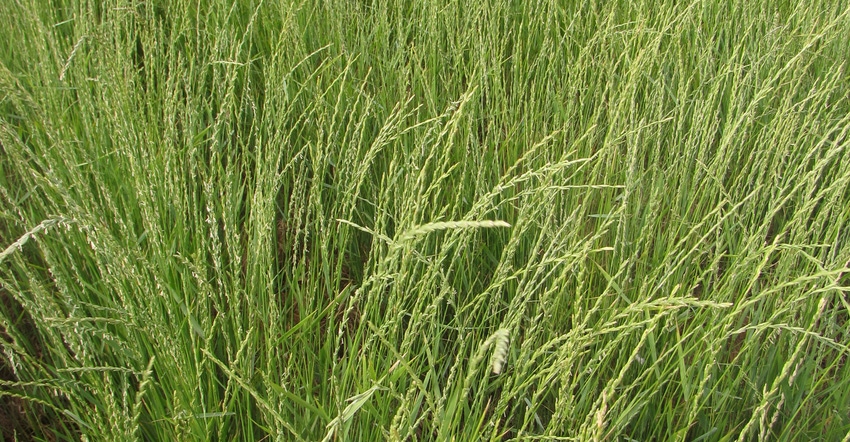
When you have marginal ground for growing crops, one solution is to turn that field into pasture for grazing livestock or harvesting hay.
Josh Svaty, who operates Free State Farms, a diversified cow-calf operation in Ellsworth County, knows all about marginal ground. He doesn’t hesitate to try something new or unique.
Svaty grew up on the farm in Ellsworth County and returned home to run for the Kansas House of Representatives when he was 22 years old. He served three and a half terms before becoming state secretary of agriculture during the Parkinson administration.
Following his time as secretary of ag, Syaty served as a senior adviser in the Environmental Protection Agency, and then as vice president at the Land Institute. It was at the Land Institute that he first learned about the perennial grain Kernza.
On Feb. 1, he shared what he has learned about Kernza with those attending the annual Agriculture’s Innovative Minds Symposium in Wichita, Kan.
For starters, Kernza, an intermediate wheat grass, is a brand-new crop — so new that when Svaty planted his 27 acres, his field constituted about 20% of the world’s acreage of Kernza.
Svaty was interested in the crop for growing on marginal land where crops had failed to thrive.
 JOSH SVATAY
JOSH SVATAY

“I routinely plant hard red winter wheat for winter grazing and I use this just like that, except this crop will be perennial,” he said. “That means you can cut it for hay in the summer and still have a root system that brings it back for winter grazing.”
Svaty said persistent dry fall weather has made it hard to assess just how well Kernza might perform.
“We’ve had four years of zero fall moisture,” he said. “It was slow to establish because of that. I think if we get a wet fall, it would take off and look great.”
Svaty said the second year has been his best year so far, even with no fertilizer. The next year, however, he noticed that the crop did not head out, especially on the tops of hills. So, he applied organic chicken litter for fertilizer.
“The next year, I took four and half tons of hay off the field,” he said. “My production is only about a third of what the producer in northern Minnesota who is experimenting with Kernza is getting. I don’t have to do as well as he does to make it work on my farm.”
Svaty said he expects Kernza to thrive for five to seven years — much the same as alfalfa — before it needs to be rotated with something else. So far, he said, he has noted that it does well even on marginal ground, and tends to crowd out weeds.
“That said, I haven’t seen any tendency for it to spread out the acreage where I planted it, so I don’t think it has the potential to become invasive,” he said.
He thinks it is an option on marginal ground for creating grazing and hay for cow-calf operators. He said he ammoniated and ground Kernza hay and his cattle ate it.
There is also some potential for harvesting the grain from the crop. Svaty said he has a contract with the Land Institute to buy what he produces.
Currently, the grain is being used to brew ale, but it can also be made into flour for bread or pancakes.
One problem that has been noted in wetter areas where it puts on more grain is a tendency for the crop to lodge.
Svaty said his next experiment in the Kernza field is going to be an over-seeding of a pollinator species, such as milkweed.
About the Author(s)
You May Also Like




